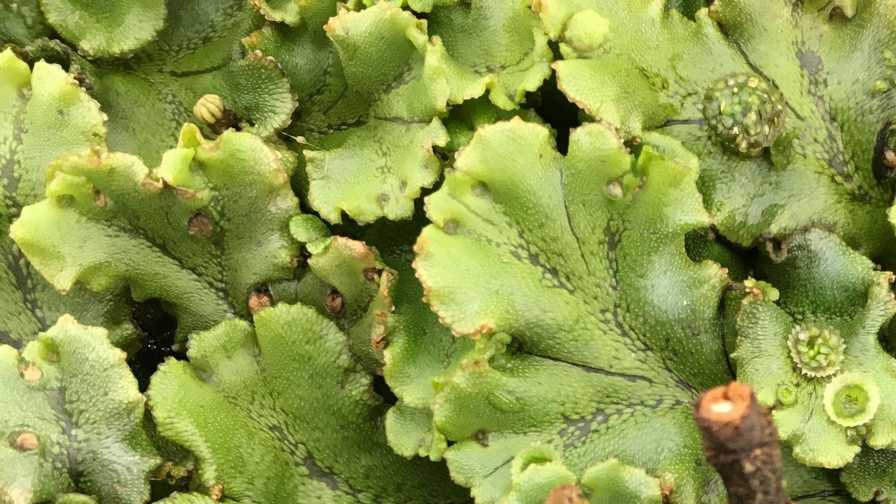Dealing With Slippery Greenhouse Weeds? Here’s How to Manage Them

Dichotomously branched vegetative thallus structure of liverwort (Marchantia polymorpha). Photo: Debalina Saha, MSU Horticulture
High moisture conditions in the greenhouse can favor the growth of lower plants, which include algae, mosses, and liverwort. All of these are considered weeds and can compete with the ornamentals grown in containers for water, nutrients, and space. They can even prevent irrigation water and fertilizers from reaching the root zone of the ornamentals, as they have a mat-forming nature and can cover the container surface. As a result, the growth of ornamentals can get reduced. In addition, they can become very slippery once they absorb moisture from irrigation water and can cause safety issues with the greenhouse workers in the walkways.
In a recent post on the eGro blog, Debalina Saha, an Assistant Professor of ornamental weed management in the Department of Horticulture at Michigan State University, discusses how commercial bleach (sodium hypochlorite), bromine, copper, peroxy-acetate, and quaternary ammonium compounds can be used to control these slippery weeds inside the greenhouse. She wars, however, that these chemicals can only be applied to the hard non-living surfaces such as walkways, benchtops, and empty pots.
“If these chemicals come in contact with the plant issues, they can cause severe damage,” Saha says.
Algae can be controlled in the cooling pads with chemicals, especially the quaternary ammonium compounds. Organic mulch such as rice hull and pine bark can be applied to the containers at a depth of 1 to 2 inches depending on the pot size, to control the liverwort and moss growth. Also, strategic fertilizer placement can help in reducing the growth of liverwort in container production.
Trials conducted at Michigan State University have shown that when controlled-release fertilizer is placed as subdressing at a depth of 2 to 3 inches from the soil surface, can provide good control of liverwort than incorporating or top dressing the fertilizer in the containers.
“Preventative measures are recommended, which include keeping the walkways dry as much as possible and making sure that runoff from fertilizer applications is minimal, maintaining proper drainage, and avoiding overirrigation,” Saha says. “Periodic cleanup, checking the new shipments and liners, and using clean media and equipment are highly recommended.”
The original eGro post can be found here.









